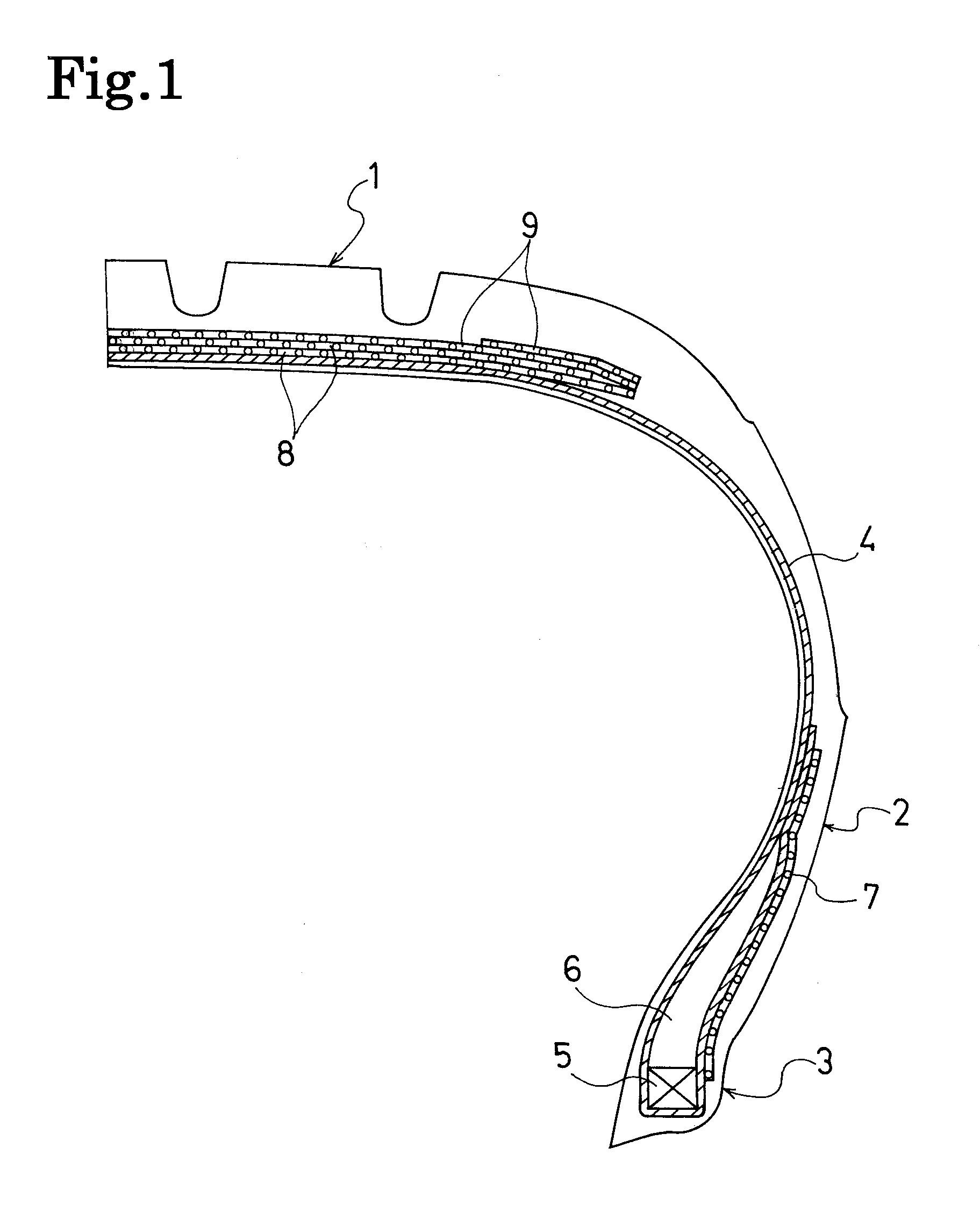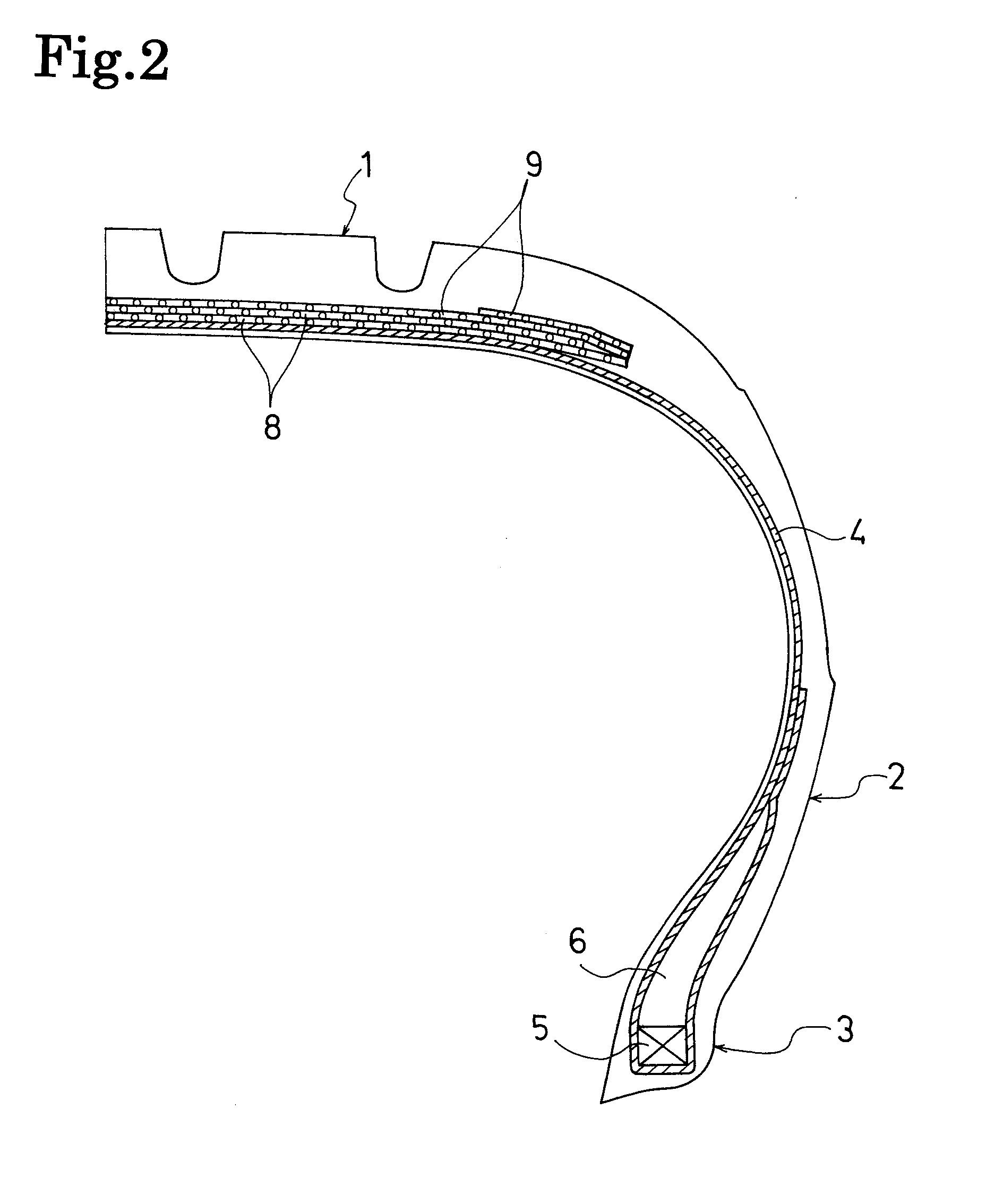Pneumatic tire
a technology of pneumatic tires and tyres, which is applied in the field of pneumatic tires, can solve the problems of increasing the diameter of the cord, excessive orientation of metal materials closer to the wire surface side (which is close to the drawing die), and increasing the thickness of the cord, so as to improve the fatigue resistance improve the straightness of the monofilament steel wire, and improve the durability performance of the tir
- Summary
- Abstract
- Description
- Claims
- Application Information
AI Technical Summary
Benefits of technology
Problems solved by technology
Method used
Image
Examples
examples
First Aspect
[0067]Tires of Conventional Examples 1 and 2, Comparative Example 1, and Working Examples 1 to 4 were fabricated having a common tire size of 195 / 65R15. Each tire was a pneumatic radial tire including a belt layer formed from a plurality of monofilament steel wires that were aligned and embedded in rubber. The wire surface twisting angle θ, the wire strand diameter d, the wire density, and the presence / absence of preforming of the monofilament steel wires were configured as shown in Table 1.
[0068]Note that in Conventional Example 2, monofilament steel wires having a wire strand diameter of 0.4 mm were subjected to spiral preforming. An outer diameter of the spiral was 0.44 mm and a pitch of the spiral was 4.0 mm.
[0069]These test tires were evaluated for calendering workability, cutting workability, tire weight, and tire durability performance according to the following evaluation methods. The results thereof are shown in Table 1.
Calendering Workability:
[0070]Workability ...
PUM
| Property | Measurement | Unit |
|---|---|---|
| twisting angle | aaaaa | aaaaa |
| twisting angle | aaaaa | aaaaa |
| diameter | aaaaa | aaaaa |
Abstract
Description
Claims
Application Information
 Login to View More
Login to View More - R&D
- Intellectual Property
- Life Sciences
- Materials
- Tech Scout
- Unparalleled Data Quality
- Higher Quality Content
- 60% Fewer Hallucinations
Browse by: Latest US Patents, China's latest patents, Technical Efficacy Thesaurus, Application Domain, Technology Topic, Popular Technical Reports.
© 2025 PatSnap. All rights reserved.Legal|Privacy policy|Modern Slavery Act Transparency Statement|Sitemap|About US| Contact US: help@patsnap.com



